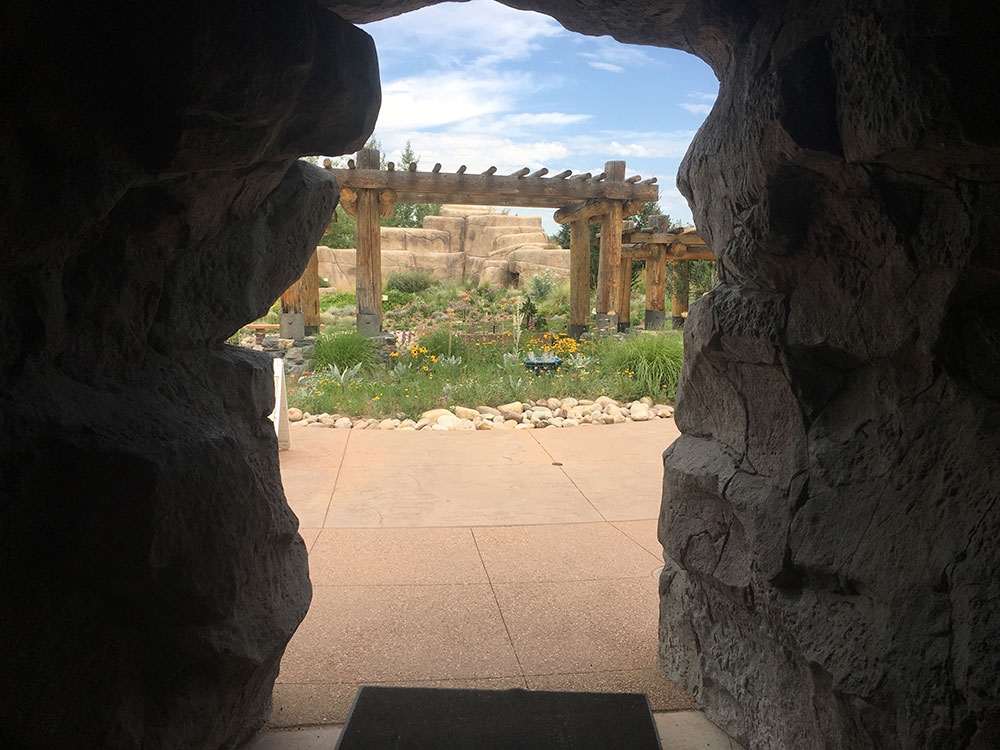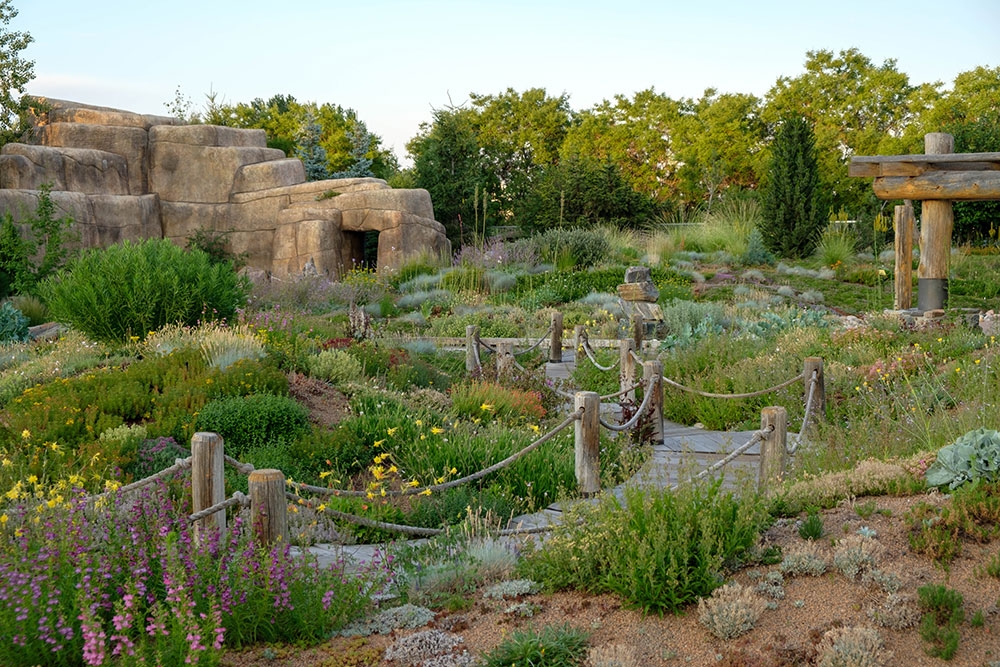Pollinators on the Rooftop
Visitors of Mordecai Children’s Garden (open March 1 - Oct. 31) may not realize that they are stepping into a rooftop garden when they pass through the cavern that opens to one of my favorite views at Denver Botanic Gardens. I was fortunate to work in a garden this past summer that was both one of the most impressive children’s gardens and green roofs that I have ever seen. The garden, as resplendent as it is, was not the only thing that made this internship so enjoyable. The staff and volunteers at the Gardens made me smile many times every single day, especially the ones who I worked with in the Children’s Garden.
My project involved collecting data for a scientific study assessing whether plants grown on a green roof differ in their phenology—the time that plants take to reach notable life stages (budding, flowering and producing seed)—from plants of the same species grown at ground level, not on a green roof. I also observed pollinator interaction with each plant species weekly over the course of the summer. Combining these two data sets, we hope to gain a better understanding of how the altered reproductive habits of plants on green roofs affect pollinators. Ideally, the results will help horticulturists, entomologists and urban planners better understand the role of green infrastructure, like our green roof, in our urban ecosystems.
As part of my project, I had the opportunity to assist in training volunteer citizen scientists to help with data collection, which dramatically decreased the time needed to complete each day’s observations and measurements. Because of two particularly committed volunteers, Bill and Betsy, a portion of my project’s workload was relieved; I cannot thank them enough for the help.
Data collection consisted of observing 10 individual plants of each species; five plants were located on the green roof and five plants were located at ground level. Phenology and pollinator data were collected each week over about nine weeks and data was collected prior to the beginning of my internship and will continue after my internship ends. The plants that I observed during my time working on my project are Echium russicum (red feathers), Eriogonum jamesii (James’ buckwheat), Liatris spicata (blazing star), Penstemon pinifolius (pineleaf penstemon), Penstemon strictus (Rocky Mountain penstemon), Salvia argentea (silver sage) and Teucrium cossonii (fruity germander). However, the study includes a few additional plants that either bloomed before my first days at the Gardens or will bloom once my time here is done, so I have omitted them from the list.
Some important data points we collected were an exact flower count, estimate of the number of flower buds and an estimate of seed number. The exact flower count was a bit painstaking for a couple of species but was made much more bearable with the help of our citizen scientist volunteers. Every week we identified and recorded pollinator visitation between 9-11 a.m. during a two-minute window for each plant. We also noted air temperature, wind strength and cloud cover as each of these factors can interfere with pollinator visitation.
Unfortunately, I have to leave you with a bit of a cliff hanger. We are in the first year of this experiment and it will run for an additional two years. I was only on the project for about nine weeks, which is too short of a duration to draw conclusions from an experiment of this type. I hate to leave a story unfinished, but I would hate even more to be the bearer of misinformation.
This blog post was written by summer intern Kyle Ruskowski. Kyle attended Michigan State University and this internship counted as the last three credits required for his undergraduate degree. During his time at MSU, he gained a passion for green city infrastructure in the form of green roofs and during his time at Denver Botanic Gardens, he renewed his love for ecology. In the future Kyle hopes to bring the two together.
Gallery


Add new comment